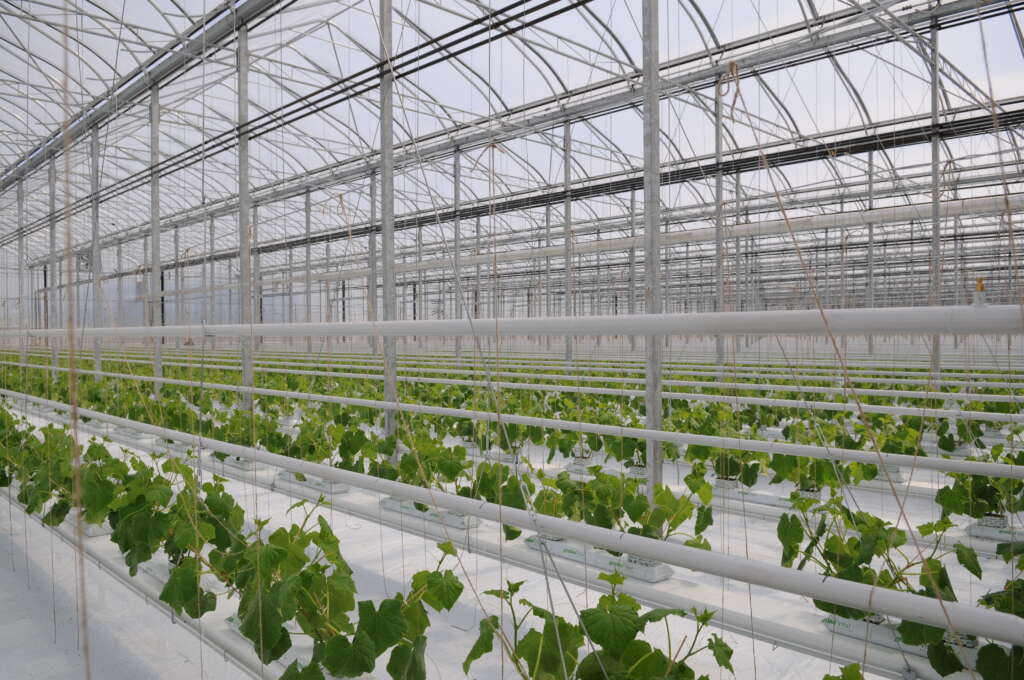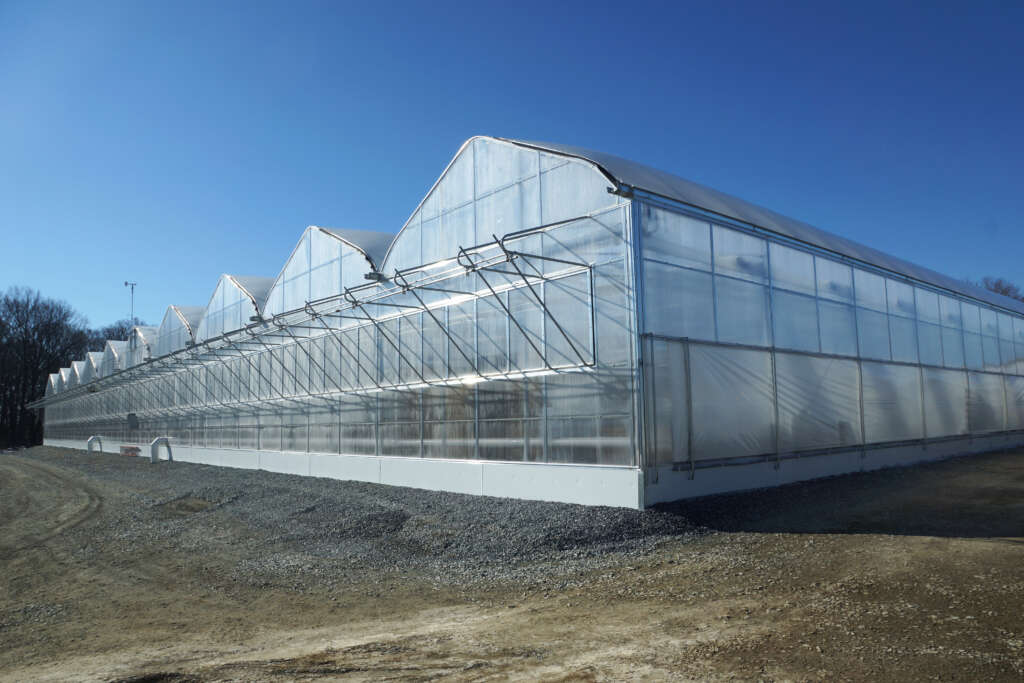Designing a commercial greenhouse facilityis a major investment that requires careful planning, strategic foresight, and attention to detail. A well-designed greenhouse doesn’t just protect your crops, it enhances productivity, reduces operational costs, and sets the stage for long-term success. From selecting the right location to integrating efficient systems, every decision you make impacts your facility’s efficiency, sustainability, and profitability. Below, we explore the top considerations you should address when designing a commercial greenhouse.
1. Site Selection and Orientation
The first step in designing any greenhouse is choosing the ideal location. Sunlight exposure is critical, as plants rely on natural light for photosynthesis and healthy growth. Ideally, your site should receive maximum sunlight throughout the day and throughout the year. Flat terrain simplifies construction and reduces excavation costs, while well-draining soil helps prevent waterlogging and root diseases.
Other factors to consider include accessibility and proximity to essential utilities such as water, electricity, and natural gas. A site close to major roads can also streamline logistics for shipping crops, receiving supplies, and accessing labor. Additionally, it’s essential to check local zoning regulations and obtain all necessary permits before beginning construction, as failure to comply with regulations can result in costly delays.
2. Structural Design and Materials
A greenhouse’s structural integrity determines its ability to withstand environmental conditions such as wind, snow, and seismic activity. Materials such as galvanized steel and aluminum are commonly used due to their durability and resistance to corrosion.
The covering material you select significantly impacts light transmission, insulation, and overall efficiency. Polyethylene film is cost-effective and provides adequate protection, while polycarbonate panels offer enhanced insulation and durability. Glass offers the best light transmission and should be considered because it is not that more expensive than polycarbonate and it is stronger than perceived. Understanding the trade-offs of each material is crucial for balancing initial investment with long-term benefits.
Check out a variety of structural design and materials offered
3. Climate Control Systems
Maintaining optimal climate conditions is one of the most critical aspects of greenhouse design. Temperature, humidity, and ventilation directly influence plant health, growth rates, and crop quality. Heating systems such as unit heaters, radiant floor heating, or hot water piping help maintain consistent temperatures during colder months.
Cooling solutions are equally important. Automated ventilation systems, roll-up sides, and shade cloths help prevent overheating during summer months. Humidity control, through foggers or dehumidifiers, ensures that moisture levels are ideal for your crops while preventing fungal diseases and mold growth. Advanced climate control systems, integrated with sensors and automation, allow for real-time monitoring and adjustment, improving efficiency and reducing labor costs.

4. Irrigation and Water Management
Water is the lifeblood of any greenhouse. Efficient irrigation systems not only conserve water but also improve crop health and reduce labor. Drip irrigation delivers water directly to plant roots, minimizing waste and ensuring uniform distribution.
Rainwater harvesting systems and storage tanks can supplement water supply and reduce dependence on municipal or well water. It’s also important to monitor water quality regularly, as high levels of salts, minerals, or contaminants can negatively impact plant growth. Proper irrigation and drainage planning helps maintain soil health, prevents overwatering, and promotes sustainable water use.
5. Energy Efficiency and Sustainability
Energy is often the largest operational cost for commercial greenhouses. Incorporating energy-efficient systems such asLED lighting,high-quality insulation, and automated heatingand cooling solutionscan significantly reduce costs. Renewable energy sources, including solar panels and geothermal systems, can further reduce your carbon footprint while providing long-term savings.
Sustainable practices go beyond energy efficiency. Consider implementing composting programs, reusing water where possible, and selecting biodegradable or recyclable materials. Sustainability not only benefits the environment but also enhances your brand reputation, appealing to environmentally conscious clients and partners.
6. Workflow and Operational Efficiency
A greenhouse is only as effective as its workflow. Careful planning of the interior layout can improve efficiency, reduce labor costs, and minimize crop loss. Position aisles, benches, and workstations for smooth movement of staff and equipment. Consider where machinery will be stored, how crops will be transported, and how space can be maximized for production.
Automation plays a crucial role in operational efficiency. Automated climate systems, irrigation controls, and fertigation systems reduce the need for constant human oversight and allow staff to focus on high-value tasks such as monitoring plant health and managing inventory.
7. Compliance with Regulations
Regulatory compliance is a critical aspect of greenhouse design. Depending on your location and the crops you grow, you may need to adhere to local building codes, zoning laws, environmental regulations, and agricultural standards. Obtaining all required permits before construction begins can save time and prevent costly setbacks.
Regularly reviewing and updating your practices to align with new regulations ensures long-term compliance. Staying informed about industry standards and government requirements also helps protect your investment and maintain operational legitimacy.

8. Budget and Financing
Designing and building a commercial greenhouse is a significant financial commitment. Creating a detailed budget that includes construction costs, materials, equipment, labor, and ongoing operational expenses is essential. Don’t forget to account for contingencies, unexpected costs such as rising material prices or construction delays can quickly strain finances.
Explore financing options such as business loans, grants, or subsidies, which may be available for agricultural projects. Financial planning ensures that your greenhouse remains viable and profitable over the long term.
9. Staffing and Training
Even with advanced automation, staffing remains crucial for greenhouse operations. Consider the types of roles required, including growers, maintenance personnel, and administrative staff. Adequate training programs help staff understand proper crop care, equipment usage, and safety protocols.
Fostering a culture of continuous learning allows your team to adapt to new technologies, methods, and sustainability practices. Well-trained staff contribute to higher productivity, lower error rates, and better crop outcomes.
10. Future Expansion and Scalability
A greenhouse is a long-term investment, so planning for growth is vital. Designing the facility with scalability in mind ensures that future expansions or upgrades can be accommodated without major disruptions.
Consider modular designs that allow for the addition of structures or technology upgrades as your operation grows. Extendable infrastructure such as electrical lines, water systems, and drainage solutions make it easier to expand production capacity. Planning ahead ensures that your greenhouse can adapt to market demand and evolving cultivation technologies.
Conclusion
Designing a commercial greenhouse facility is a complex process that requires careful consideration of multiple factors. From site selection and structural materials to climate control, irrigation, energy efficiency, and operational workflow, each decision plays a crucial role in determining the long-term success of your operation.
By prioritizing sustainability, compliance, and efficiency, you can create a greenhouse that maximizes productivity, reduces operational costs, and supports future growth. Thoughtful planning and strategic investment in technology, staff, and infrastructure will help your commercial greenhouse thrive in an increasingly competitive agricultural landscape.
A successful greenhouse is more than a structure, it’s a carefully designed ecosystem that supports healthy plants, efficient operations, and sustainable growth for years to come.
Ready to get started or unsure which greenhouse structure is right for you? Our team of experts is here to help. Contact us todayto discuss your project and find the perfect solution for your growing needs!

